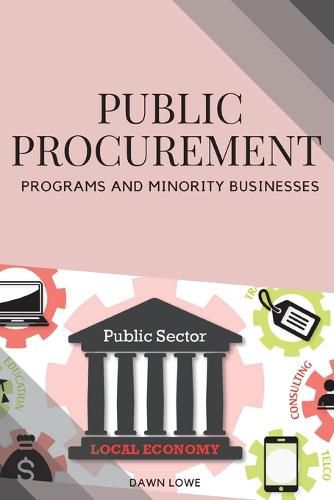Readings Newsletter
Become a Readings Member to make your shopping experience even easier.
Sign in or sign up for free!
You’re not far away from qualifying for FREE standard shipping within Australia
You’ve qualified for FREE standard shipping within Australia
The cart is loading…






This title is printed to order. This book may have been self-published. If so, we cannot guarantee the quality of the content. In the main most books will have gone through the editing process however some may not. We therefore suggest that you be aware of this before ordering this book. If in doubt check either the author or publisher’s details as we are unable to accept any returns unless they are faulty. Please contact us if you have any questions.
Historically, governments in many countries have used public procurement to advance certain policy objectives (Pooe, Maffini, & Tsani-Makhubele, 2015). Government programs geared toward procurement for minority businesses can be seen as essential tools in equalizing opportunity and providing affirmative action benefits to minorities (Pooe, et al. 2015). These programs are also an important means of institutionalizing social equity (Smith
& Fernandez, 2013). Affirmative action public procurement dates back to 1953 when the Small Business Administration (SBA) was established to provide government support to small businesses (U.S. SBA, 2014, Winkler, 1995). Initially, the SBA's work resembled what became known as affirmative action. However, the SBA's efforts were mostly legitimized alongside the implementation of the Equal Opportunity Act in 1966.
$9.00 standard shipping within Australia
FREE standard shipping within Australia for orders over $100.00
Express & International shipping calculated at checkout
This title is printed to order. This book may have been self-published. If so, we cannot guarantee the quality of the content. In the main most books will have gone through the editing process however some may not. We therefore suggest that you be aware of this before ordering this book. If in doubt check either the author or publisher’s details as we are unable to accept any returns unless they are faulty. Please contact us if you have any questions.
Historically, governments in many countries have used public procurement to advance certain policy objectives (Pooe, Maffini, & Tsani-Makhubele, 2015). Government programs geared toward procurement for minority businesses can be seen as essential tools in equalizing opportunity and providing affirmative action benefits to minorities (Pooe, et al. 2015). These programs are also an important means of institutionalizing social equity (Smith
& Fernandez, 2013). Affirmative action public procurement dates back to 1953 when the Small Business Administration (SBA) was established to provide government support to small businesses (U.S. SBA, 2014, Winkler, 1995). Initially, the SBA's work resembled what became known as affirmative action. However, the SBA's efforts were mostly legitimized alongside the implementation of the Equal Opportunity Act in 1966.